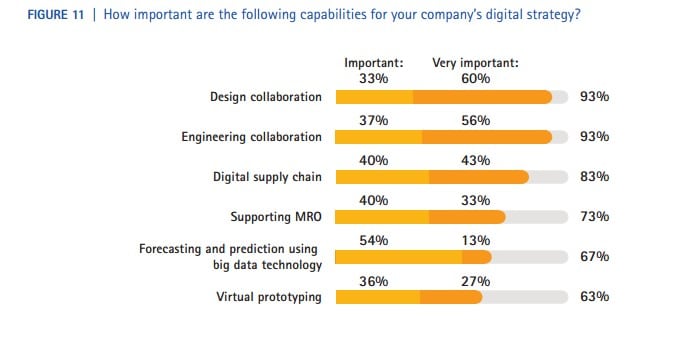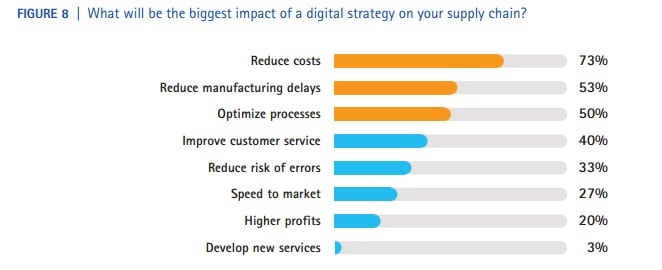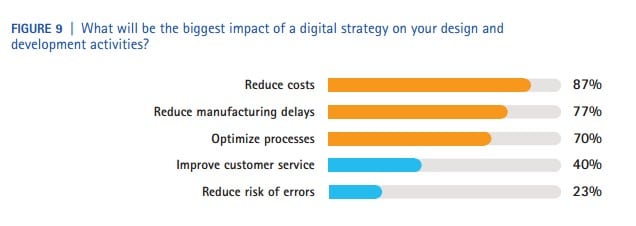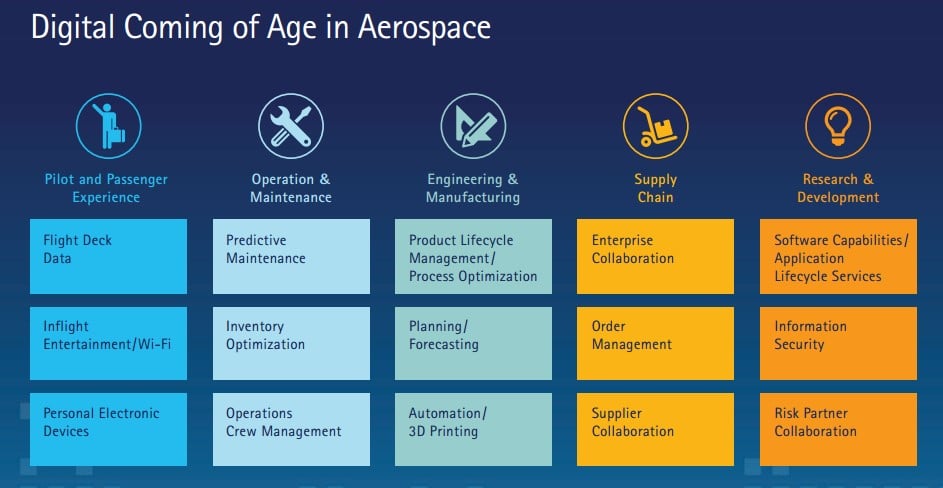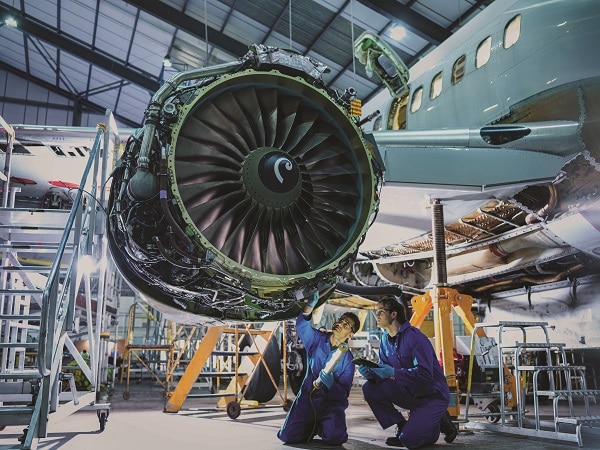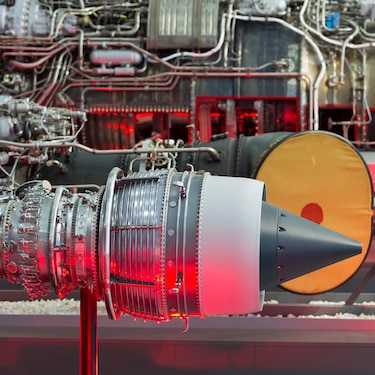 53% of aerospace companies are expecting their investments in digital technologies to reduce manufacturing delays.
53% of aerospace companies are expecting their investments in digital technologies to reduce manufacturing delays.
- 100% of senior management respondents see digital technology as a means to transform Maintenance, Repair and Overhaul (MRO) support.
- Aerospace manufacturers are planning to invest 5-10% of their total revenues in digital capabilities over the next three years to reduce time-to-market and increase quality.
Digital technologies have long been relied on for improving supply chain performance, reducing time-to-market and improving financial performance in aerospace manufacturers. The accelerating effects of analytics, big data, mobile and social are also reordering the digital technology landscape of aerospace manufacturing today. The recent Accenture study, The Digital Coming of Age, Seizing the Digital Opportunity in Aerospace (free, no opt-in, 16 pp) provides valuable insights into just how powerfully digital technologies are revolutionizing aerospace manufacturing. Today’s aircraft have nearly three times the number of software-driven functions as their predecessors from the 1990s, further underscoring the need for digital technology strategic planning.
Accenture surveyed senior executives from 30 aerospace companies globally, assessing the maturity of digital technology investment performance in commercial segments. These executives represent aircraft manufacturers, engine manufacturers and suppliers from Brazil, Canada, France, Germany, Italy, Spain, the United Kingdom and United States.
Key take-aways from the study include the following:
- Engineering (53%), Customer Service (23%) and Supply Chain (17%) are the three areas aerospace manufacturers will invest in digital technologies the most in two to three years to increase opportunities.
- Improving design and engineering collaboration (93%), digital supply chain performance (83%), supporting MRO (73%) and gaining greater accuracy of forecasting and prediction using big data technology (67%) are the four most important capabilities aerospace manufacturers are investing in to improve their company’s digital strategies.
- Reducing cost and improving efficiency (73%) and improving product lifecycle management (53%) are the top three most important internally focused reasons aerospace manufacturers are adopting digital technologies. Improving customer retention and relationships (73%), growing revenues (70%) and improving relationships with partners (43%) are the three most important externally-focused reasons for adopting additional digital technologies.
- 49% of aerospace manufacturers are forecasting they will invest 5% or more of total revenues ion digital technologies over the next two to three years.
- Aerospace manufacturers anticipate their investments in digital technologies will continue to streamline and improve supply chains. Reducing costs (73%), reducing manufacturing delays (53%), and optimizing processes (50%) are the three areas aerospace manufacturing executives anticipate their investments in digital technologies to pay off the most in the next two to three years.
- Design and development activities are essential to every aerospace manufacturers’ current and future business. When asked how digital strategies will most impact design and development, executive respondents said reducing costs (87%), reducing manufacturing delays (77%), and optimizing processes (70%) are the three areas they expect the most impact in.
Bottom line: Digital technology is galvanizing every aspect of aerospace manufacturing’s value chain to deliver faster time-to-market, higher quality levels, lower costs and an improved pilot and passenger experience.


